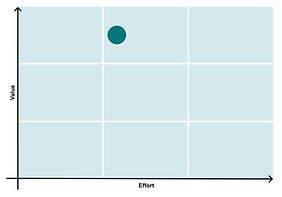Growth Hacking
Leverage our curated growth hacks for software development. Implementing these proven tactics will increase your follower base, brand recognition, and foster a loyal community of users who actively promote your software.
Available Patterns:
83
Retention Strategies

User Behavior Emails
Sending personalized follow-up emails based on user behavior involves leveraging data on user interactions, such as website visits, email opens, clicks, and purchases, to tailor email communication and content to individual preferences and interests. This strategy aims to nurture leads, re-engage inactive users, and drive conversions by delivering relevant and timely messages that resonate with recipients.
Product Optimization

Personalization
Personalizing the user experience involves tailoring content, recommendations, and interactions on a website or app to meet the specific needs, preferences, and behaviors of individual users. This can include customizing messaging, product recommendations, and navigation based on demographics, past interactions, browsing history, and other relevant data points.
Product Optimization

Exit-Intent Pop-Ups
Implementing exit-intent pop-ups involves displaying targeted messages or offers to website visitors when they demonstrate intent to leave the site, typically by moving their cursor towards the browser's navigation bar or closing the tab/window. These pop-ups aim to capture leads, encourage conversions, or offer incentives to visitors before they exit the website.
Retention Strategies

Customer Loyalty Program
Implementing a robust customer loyalty program involves creating a structured system that incentivizes and rewards customers for their continued engagement, purchases, and advocacy. This program typically offers various perks, benefits, and rewards to encourage loyalty, retention, and advocacy among customers.
Product Optimization

Landing Pages
Optimizing landing pages for conversion involves crafting persuasive copy and design elements to encourage visitors to take a specific action, such as making a purchase, signing up for a newsletter, or downloading a resource. This includes creating compelling headlines, persuasive messaging, clear calls-to-action (CTAs), and visually appealing layouts that guide visitors towards conversion goals.
Product Optimization

Optimizing Speed and Performance
Optimizing website speed and performance involves implementing various techniques and best practices to minimize page load times, improve responsiveness, and enhance overall user experience. This includes optimizing code, reducing server response times, compressing assets, and leveraging caching mechanisms to deliver content quickly and efficiently to users.